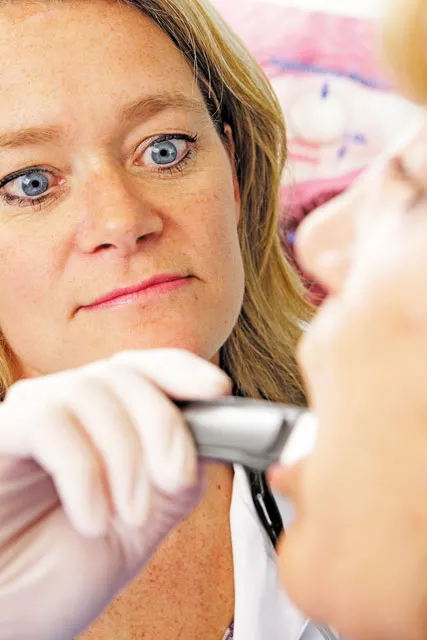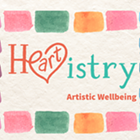
“My role is to keep the highways healthy — I like to think,” Amy Doneen says. But she’s not wearing an orange vest and toting a trash bag — no, Doneen is talking about the practice she’s built here in Spokane that centers around keeping arteries clean and clear. Healthy. Free of any obstruction that could turn into a heart attack or a stroke.
The Spokane nurse practitioner and director of the Heart Attack and Stroke Prevention Center is positive, upbeat, downright sunny as she talks about heart attack and stroke prevention techniques. And that’s because her business is in improving lives, not reacting to cataclysmic health disasters.
“Historically, Western medicine has supported that we wait until something happens to us, and then we do something about it,” Doneen says. “But if you have a glaring family history, take action.”
Most people are familiar with the risk factors for heart attack and stroke — high blood pressure, high cholesterol, smoking and diabetes. But what isn’t as well known is that about 20 percent of cardiovascular events strike people with none of the four risk factors, and 50 percent of all cardiovascular events strike people with low- to moderate-cholesterol levels. So what’s going on?
Research shows that part of the process of cardiovascular disease involves not only clogging but inflammation around the diseased area. Doneen and Dr. Bradley Bale, a former family practitioner in Spokane and co-founder of the Heart Attack and Stroke Prevention Center, developed a number of strategies for finding clues that inflammation and underlying disease is occurring, even when other traditional testing seems to indicate there’s no cause for concern.
Doneen started thinking about prevention as she rounded her 10th year as a registered nurse.
“I saw a lot of people in end-stage disease, people who’d had a stroke who couldn’t talk anymore, a heart attack where people couldn’t breathe anymore,” she says.
That’s when she crossed paths with Bale, and they instantly clicked in their hopes to prevent disease before it left people disabled after a heart attack or stroke.
“No one before had taken prevention as their cause célèbre, if you will,” she says. “Once the stent or the bypass is done, whose job is it that that doesn’t happen again?”
Today, Doneen makes it her job. She works with patients at all stages of life and health to take action. And the patients vary: men and women who’ve never had so much as one symptom of arterial disease. Young people with long family histories of heart disease, diabetes or strokes. The occasional young child. Adoptees with no knowledge of their parent’s medical pasts. And many, many folks who have already suffered a traumatic event and want, more than anything, to take the reins of their second chance.
“Once you see where the disease lives, it all of sudden becomes clear why prevention can be tricky but do-able at the same time,” she says. “The system is set up to treat end-stage disease. But what if we realize that diabetes starts 20 years before you are diabetic?”
When patients come for an appointment, they are screened using a patented set of treatment strategies developed by Doneen and Bale (aptly called the Bale-Doneen Method).
The key way to understanding the Bale-Doneen Method is the acronym EDFROG: that’s education, disease, fire, roots, optimal goals and genes. It’s Doneen’s way to realistically educate patients on the causes of arterial disease while also looking into the reasons for inflammation and creating a game plan for each individual. No two treatment plans are the same.
In some cases, Doneen uses a genetic test to spell out what predilections for disease are contained in our DNA. The test — a kind of uber-tongue depressor that is swabbed on the inside of the cheek — can screen even the youngest patient for genetic risks of a variety of diseases. If a test comes back positive for, say, diabetes, Doneen emphasizes that that hardly means that it will happen — but it’s our body’s way of saying it’s a possibility.
“It sort of opens that door as well to say, ‘Gosh, do you know you have a lifetime risk of this or that [disease]?’” she says. “I think knowledge is power. The more we know, the better opportunity we have to make decisions.”
Genetic tests can also come back showing risk for diseases and issues that Doneen doesn’t treat (everything from multiple sclerosis to cancer) — but she can refer people to get the preventive help they need.
“Having a genetic profile is beautiful — it tells you exactly what your lifetime risk is and what you’re heading for,” Doneen says. “If you’re positive for the gene, make treatment decisions [to keep that from] ever occurring. Our ceiling now is 100. We should all think how we are going to maximize our lives and live until 100.”
Although the system is still slowly gaining recognition in the Inland Northwest, there are clinics utilizing the method in Boulder, Colo., and Lubbock, Texas. Continuing education courses for health care providers are endorsed by the Texas Tech University School of Medicine and the School of Nursing, where Doneen is an adjunct professor and Bale is a clinical assistant professor.
Spreading the word about these strategies now takes Doneen all over the globe, training doctors to start thinking preventively and to consider genetic testing for patients. Four years ago, when Doneen first started speaking to groups, their ideas were totally revolutionary.
“At the time it was sort of this new and so out-there thing,” Doneen says. But recently, doctors nationwide are starting to get on board. “We’re sort of on the cusp of change.”














